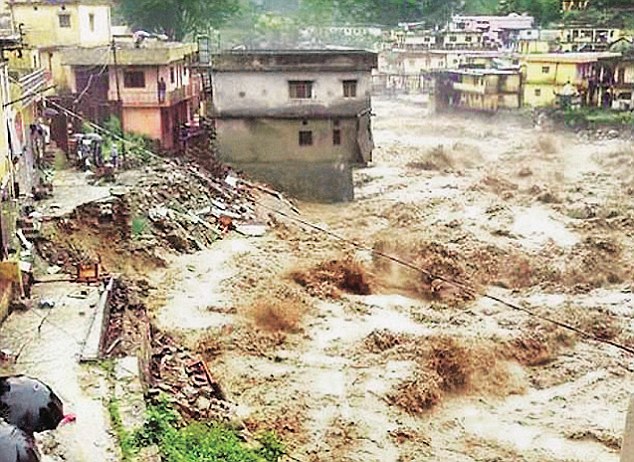New Delhi|Ekta
According to World Disasters Report 2016 indicates that 16.5 million people in India alone were affected by disasters in 2015.
The report, says despite broad recognition that investing in resilience before a disaster can save lives and money, only 40 cents in every 100 US dollars spent on international aid is invested in preparedness and measures to reduce disasters risk.
While releasing the report on saturday Kiren Rijiju, Minister of State for Home Affairs said “We are already giving high priority for resilience in the policy of Government of India and we must further invest in solutions and partnerships that produce future resilience – livelihoods and social cohesion, health and psychosocial well-being, supporting communities to withstand future shocks and adversity” .
With over 1.7 billion people, South Asia is the most densely populated region in the world and suffers some of Asia’s worst disasters. Data from the International Federation of Red Cross and Red Crescent Societies (IFRC) flagship publication the World Disasters Report 2016 indicates that 16.5 million people in India alone were affected by disasters in 2015. The report calls for a more nuanced approach to the development of measurements and indicators – reflecting the sometimes hidden ideologies and power dynamics involved – and for a greater focus on anticipation, collaboration and partnership as a way of bringing about long-lasting to affected communities.
Indian Red Cross Society held in partnership with the International Federation of Red Cross & Crescent Societies launched the IFRC’s World Disasters Report 2016 which focuses on resilience.
While talking with Healthlive Dr. Veer Bhushan, Joint Secretary, Indian Red Cross Society said “Although issue of resilience is a high priority for Indian Red Cross Society, we are facing continuous challenges for raising resources for Disaster Risk Reduction activities. Only a fraction of total international aid expenditure is funnelled into risk reduction, with up to two-thirds of disaster spending occurring after a disaster happens”
“International Federation of Red Cross & Red Crescent Societies is calling substantial increase in investment in disaster risk reduction and community resilience. By investing in resilience, Governments and communities could save lives, prevent human suffering and save billions in recovery costs and economic losses” said Leon Prop, Head of Country Cluster, International Federation of Red Cross & Red Crescent Societies.
The World Disasters Report 2016 painted a picture of a world facing complex challenges that cannot be comprehensively addressed through post-disaster response or emergency interventions. This year’s World Disasters Report calls for a radical change in the way we manage natural disasters. By investing in resilience, we will save lives and money.
World Disasters Report 2016 – Resilience: Saving lives today, investing for tomorrow
Some Facts and figures
1. 65.3 million people were forcibly displaced at the end of 2015, compared to 59.5 at the end of 2014. This is the highest figure ever recorded by UNHCR.
(UNHCR, 2016)
2. 40.8 million people were internally displaced worldwide as a result of conflict and violence at the end of 2015. This is the highest figure ever recorded by IDMC and UNHCR.
(IDMC, 2016; UNHCR, 2016)
3. The rate at which people are fleeing war and persecution has soared from 6 people per minute in 2005 to 24 people per minute in 2015.
(UNHCR, 2016)
4. Measured against the world’s population of 7.4 billion people, one in every 113 people globally is now either an asylum-seeker, internally displaced or a refugee.
(UNHCR, 2016)
5. Weather-related disasters are displacing 22.5 million people each year since 2008 – the equivalent of 62,000 people every day.
(OCHA, 2015)










